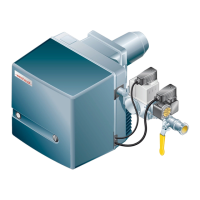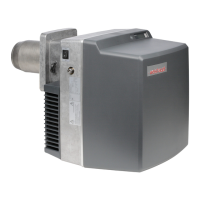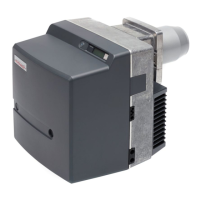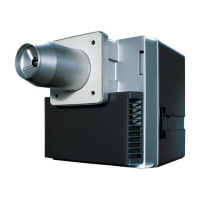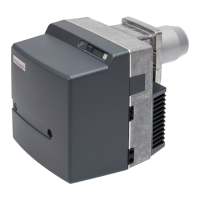44
6 Commissioning and startup
6
.6 Calculating the gas throughput
To provide the correct thermal input to the appliance, the required gas throughput must
be determined beforehand.
Conversion from standard to operating conditions
The calorific value (H) of combustible gases is generally given in relation to the standard
barometric conditions.
Q
N
= Boiler rating [BTU/h] P
B
ARO
= Barometric pressure [“ w.c.]
η = Efficiency [%] P
G
= Gas pressure at meter [“ w.c.]
H = Calorific value [BTU/cu-ft] t
G
= Gas temperature [° C]
f = Conversion factor t
F
= Gas temperature [°F]
Burner’s high fire has to be adjusted according to the capacity of the appliance.
Therefore, the gas throughput must be verified and set accordingly.
Mean annual barometric pressure
Example
Normal volume V
N
:
Q
N
V
N
=
η x H
Actual volume V
B
: Gas temperature in Celsius
V
N
V
B
= t
G
= (t
F
– 32) x 0.5556
f
Conversion factor f:
P
BARO
+ P
G
x
273
f =
399 273 + t
G
Altitude above sea level = 656 ft
Barometric pressure P
BARO
as per table = 392“ w.c. (995 mbar)
Gas pressure P
G
at meter = 5 PSI (135”w.c.)
Total pressure P
T
(P
BARO
+ P
G
) = 527“ w.c. (1339 mbar)
Gas temperature t
G
= 68°F (20°C)
Conversion factor (f) = 1.23
Boiler rating Q
N
= 1,000,000 BTU/h
Efficiency η (assumed) = 82 %
Calorific value H = 1,000 BTU/cu-ft.
Installation and Operating Instructions
G
as burner WG20.../1-C ZM-LN (W-FM 25)
83055116 • 1/2016-05
Average geodetic altitude (ft) From 1 160 330 490 660 820 985 1150 1315 1480 1640 1800 1970 2130 2300
of installation area To 0 160 330 490 660 820 985 1150 1315 1480 1640 1800 1970 2130 2300 2460
Mean annual barometric “ w.c. 400 399 396 394 392 389 387 385 382 380 377 375 373 371 368 366
pressure mbar 1016 1013 1007 1001 995 989 983 977 971 965 959 953 947 942 936 930
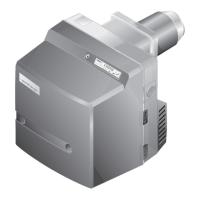
